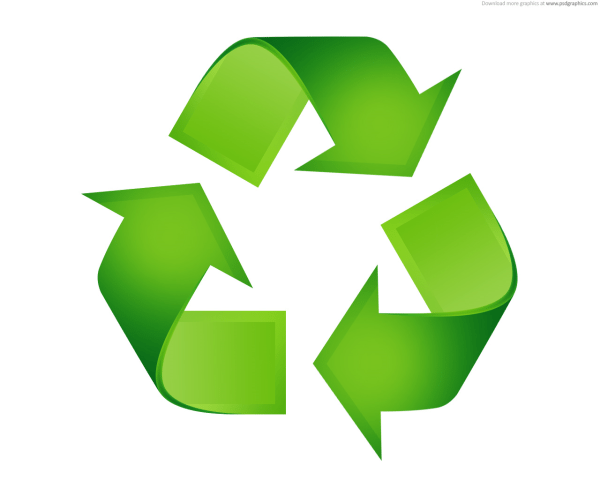
I’ve written in the past about solid wastes and the different criteria that can be met for a material to be considered as such. You may remember that one way for a material to be considered a solid waste is for it to be recycled in a certain manner. Today we’re going to talk about the different classifications of recycled materials.
According to the EPA, “when a material is recycled, its regulatory classification (i.e., whether or not it is a solid waste, and potentially a regulated hazardous waste) depends on two factors: first, what type of secondary material is being recycled; and second, what type of recycling is occurring.” These materials are called “secondary materials” and are explained in further detail below.
A secondary material is defined as a material that when recycled could potentially be a solid or hazardous waste. These used or residual waste-like materials are broken down into five categories, spent materials, sludges, by-products, commercial chemical products, and scrap metal. All waste-like materials fit into one of these five secondary material categories.
What is a spent material?
According to the EPA, “Spent materials, as defined in §261.1(c)(1), are those used materials that can no longer serve the purpose for which they were produced without undergoing regeneration, reclamation, or reprocessing. Examples include spent solvents, spent activated carbon, spent catalysts, and spent acids.”
What is a sludge?
The EPA defines sludges as, “any solid, semisolid, or liquid waste generated from a wastewater treatment plant, water supply treatment plant, or air pollution control device.” An example is baghouse dust. There are two sludge categories, those listed on the F or K list (F037 petroleum refinery oil/water/solids separation sludge), and those which exhibit a hazardous characteristic.
What are byproducts?
A byproduct is a material that is created through a production process but which is not a primary product of said process. A byproduct is a catch-all term, and includes most wastes that are not spent materials or sludges. One example is a distillation column bottom.
What is a commercial chemical product?
According to §261.33, commercial chemical products (CCPs) include unused chemical intermediates, off specification variants, and spill or container residues. An example is unused sodium cyanide. According to the EPA, “the definition of CCP, which is also part of the hazardous waste identification process for P- or U-listed wastes, is expanded for the purposes of defining a material as a solid waste. For this purpose, the term CCP also includes chemicals that are not listed in §261.33 but exhibit a hazardous characteristic (e.g.,off-specification jet fuel), as well as other unused commercial products that exhibit a characteristic of hazardous waste, even though they are not commonly considered chemicals (e.g. unused circuit boards, unused batteries).”
What is meant by scrap metal?
The EPA defines scrap metal as “bits and pieces of metal parts that are worn or superfluous.” The term also includes products made of metal that become worn out such as scrap automobiles and radiators. Excluded scrap metal (processed scrap metal, unprocessed home scrap metal, and unprocessed prompt scrap metal) is not a secondary material because it is excluded from the definition of solid waste.
Keep reading our blog to learn more about solid waste recycling. Check back soon for information about the different types of recycling a solid waste can be part of. All information for this blog post was gathered from the EPA Document, Definition of Solid Waste and Hazardous Waste Recycling. As always, this blog post is not intended to be comprehensive and it is always best to check with the EPA and local government for full rules and regulations.
More News From Heritage
-
2/21/25
Heritage Announces East Liverpool, Ohio 2025 Environmental Grant Program
Learn about our East Liverpool Ohio grant opportunity!
-
2/18/25
Heritage Environmental Services Announces James (Shelby) Marlow as Chief Financial Officer
Heritage Environmental Services announced today that James (Shelby) Marlow will join the organization as Chief Financial Officer.
-
1/31/25
January Community Engagement Initiative: Home/Work Energy Reduction
Learn about our January community engagement initiative
-
1/29/25
Heritage Environmental Services Announces Chris Ebeling as Chief Commercial Officer
Heritage Environmental Services announced today that Chris Ebeling will join the organization as Chief Commercial Officer.
-
1/28/25
Heritage Environmental Services Addresses Industry Challenges with New State-of-the-Art Shredder
Heritage Environmental Services announced a new state-of-the-art shredding unit.
-
1/7/25
Navigating e-Manifest: What You Need to Know About Hazardous Waste Compliance
Learn about the e-Manifest Third Rule changes that begin January 22, 2025
-
12/23/24
Wreaths Across America 2024
This year, through collective effort and heartfelt generosity, we sponsored 727 wreaths and transported two truckloads of wreaths across the country.
-
12/2/24
Heritage Environmental Services Announces Rachel Evans as Chief Human Resources Officer
Heritage Environmental Services announced today that Rachel Evans will join the organization as Chief Human Resources Officer.








